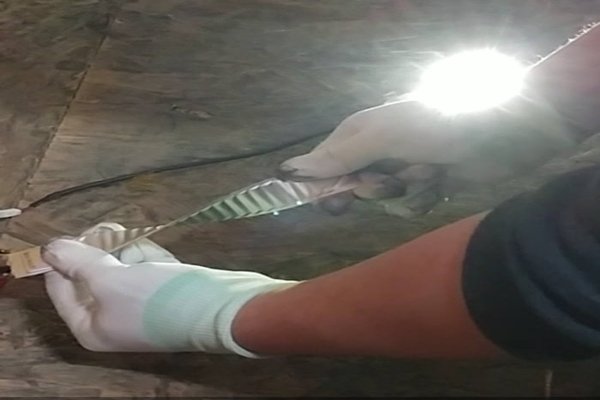Flexible batteries that operate normally even when they are cut with a scissor or folded in 180° or twisted excessively have been released. Their applications are infinite as they can be applied to wearable devices, Smart watches, AR (Augmented Reality) and VR (Virtual Reality) devices, and wireless headsets.
Amo Greentech Co., Ltd., which is a subsidiary of Amotech, made an announcement on the 6th that it finished testing performance of ‘flexible lithium-ion battery’, which was developed by its own technologies, and is going to start mass-producing it at facilities in South Korea and China in October.
This will be about a year faster than battery technologies from Samsung and LG that are planning to commercialize them in 2018.
Amo Greentech Co., Ltd. is planning to mass-produce 6 small secondary batteries such as 42mAh, 135mAh, 650mAh, 1,000mAh, and 2,000mAh batteries and received certifications from UL, which is an international performance and safety standard, IEC (International Electrotechnical Commission), and KSC (Korea Standards Commission). It is possible to apply these products right away.
Currently testing on credibility of these batteries is carried out by medical device and wireless headset manufacturers from the U.S. and a Smart Band manufacturer from China.
These batteries operate normally even when they are forcibly folded 180° or twisted left and right up to 20°. They still operate normally even when batteries are damaged from nails and cut with non-metallic (ceramic) scissors. Unlike how current flexible batteries have flexibility by having separate space between cells of batteries, these batteries are designed by having a cell easily bent like a straw.

Research team used aluminum pouch to prevent water such as electrolyte leakage by using special binder (adhesion) technology for electrodes and 3D net-structure coating technology as major technologies. By using nano-fiber microfilm coating method that is more than twice finer than normal surface of an electrode, these batteries can prevent electrolyte leakage even when electrodes are damaged from outside impact.
Due to this reason, there is no risk of ignition such as overheating even when they are folded or cut in half. They use PAN (Polyacrylonitrile) instead of plastic polyethylene (PE) and polypropylene (PP) as a material for a separator and can withstand high temperature of more than 300°C unlike how normal lithium batteries can withstand up to 130 and 150°C.
However density of energy is about 30% lower than normal lithium batteries as materials are made thicker by increasing content of adhesives in order to increase an effect of flexibility. Because this is still an early stage for these batteries, its price is twice more than normal polymer or quadrilateral batteries which needs to be fixed in the future.
“We are at a point where we can commercialize batteries that not only have flexibility through net-like 3D nano-fiber coating technology but also eliminated risk of ignition from extreme outer impact.” said Team Leader Noh Seung-yoon of Amo Greentech Co., Ltd.’s Battery Business Team. “Because we already finalized a contract with a Chinese IT device manufacturer regarding supply of these batteries, we are going to mass-produce these batteries in October without any problems.”
Staff Reporter Park, Taejoon | gaius@etnews.com